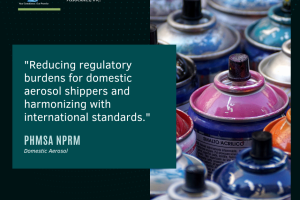HAZMAT 101 Pt. 2

The Basics- Who?
I can only assume that if you’re reading this, you have decided to stick it out with us and enjoyed Part 1 of this 3-part series, so, thank you! Now let’s get back to that ever-present question of “Who is considered a hazmat employee?” As mentioned before we get asked this question a lot in one form or another.
To answer this question, let’s look at what the regulations say:
Per 49 CFR (Code of Federal Regulations) 171.8 (i), a Hazmat employee means:
(1) A person who is:
(i) “Employed on a full-time, part time, or temporary basis by a hazmat employer and who in the course of such full time, part time or temporary employment directly affects hazardous materials transportation safety;”
Easy-peasy lemon-squeezy right? Still confused? Don’t worry you’re not the only one. The layman’s explanation would be: A person who is employed by a hazardous materials employer and directly affects hazardous materials (hazmat) or dangerous goods transportation safety. I know, I know still a littler murky. How do I know if I affect hazardous materials transportation safety?
Well, if you are shipping any regulated material (including aerosols, paints, chemicals, batteries, just to name a few) you should be trained in the regulations and be aware of the hazards that your products pose. If you perform any of the following pre-transportation functions you will also need hazmat training:
- Filling a container,
- Securing a container,
- Determining the hazard class of a material,
- Marking and labeling packages,
- Reviewing shipping papers,
- Certifying shipping papers,
- Placarding
- Providing emergency response information.
This would make you a hazmat employee and fall under the requirements of 49 CFR. Again, in laymen terms, If you load, unload, fill, package, mark, label, placard, select a package, complete a shipping paper or hazardous waste manifest, segregate hazardous materials on a transport vehicle, block and brace hazardous materials, or classify a hazardous material you need hazmat training.
What kind of hazmat training you ask? Great question! It depends on what mode of transportation you are shipping your hazardous materials.
US Ground
Falls under the DOT training requirements found in 49 CFR 172.704 and will cover: General awareness/familiarization, function-specific training, safety, security awareness, and In-depth security (if a security plans is required).
Air
Falls under the ICAO/IATA and covers: applicability, limitations, classification, dangerous goods list, packing instructions, marking, labeling, packaging requirements, and documentation.
Sea
Falls under the IMDG and covers: general provisions, classification, dangerous goods list, packaging and tank provisions, documentation, marking and labeling, packaging, and stowage.
It should also be noted that DOT and IMDG require retraining every 3 years while IATA requires every 24 months of the initial training. Well, that was a fire hose of information reminiscent of If You Give a Mouse a Cookie, but hopefully helpful. Halfway through and we have already dived deep into the “what” and “who” of hazardous materials, next we will tackle the “why.”
But, if you’re already a hazardous materials expert, and want to know more about industry news, reg changes, and exclusive offers, make sure to opt-in to our newsletter or follow us on our Facebook, LinkedIn, or Twitter accounts to stay ahead of the curve. So, whether you need one class, a multi-business training package, or complete compliance solution, let Transportation Compliance Associates, Inc. take the guess work out and help you achieve all your safety and compliance goals. For a FREE consultation call us at (724) 899-4100 or check us out at learnhazmat.com and one of our team members will help you decide what industry leading training and compliance program best suits your needs.
Tag:49 CFR, Hazmat training, iata, ICAO, imdg




